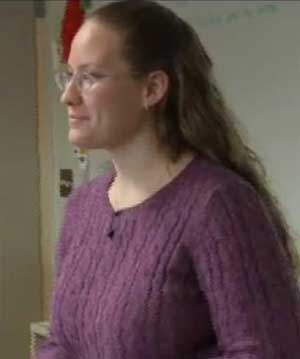Mary Lee McJimsey

Mary Lee McJimsey
Mary Lee decided to become a teacher while she was an undergraduate physics major at Cal Poly in San Luis Obispo. She was doing physics research at the time, and found that “every day I came in and did exactly the same thing.” She was inspired to pursue a teaching career—a goal with which she had originally entered college—by the full-time, on-campus Teacher-in-Residence who was hired as part PhysTEC, which is a project that works with selected universities such as Cal Poly to help them improve their physics teacher preparation programs. Mary Lee says that “unlike many other teachers who say their programs didn’t prepare them for the classroom, I really did feel prepared because of PhysTEC.”
Mary Lee is also a Knowles Science Teaching Fellow, which is a fellowship that supports selected beginning math and science teachers. The Knowles Fellowship brings Mary Lee and other fellows to meetings several times a year and supports them to pursue professional development opportunities. Mary Lee values highly the community of fellow teachers that these programs provide. “If I have a question,” she says, “I can pick up the phone and call one of my fellow PhysTEC teachers or Knowles Fellows and ask, ‘do you think this is a good lesson?’ or ‘one of the students in my class just cheated, what should I do about this?’ Since I am the only physics teacher at my school, these interactions are extremely valuable.”
Although Mary Lee no longer works in a lab, she is still very much involved in research. She works with an education researcher in the state of Washington who often visits and videotapes her class to collect data on how students learn physics in a real-life setting. Mary Lee sees teaching and research not as separate, but intimately related: “it’s really important for teachers to be well-versed in physics education research so that they know how students are actually constructing their knowledge. My understanding of this research informs the methods I use in my classroom.”
“Why do I love teaching?” says Mary Lee. “For one, I understand how much this job is doing to change my community. I can help a student choose to go to college, and maybe even become one of the next engineers or physicists who’s going to change the world. Also, every single day is different. I see 130 kids in my classroom every day, and probably double that in the halls. I see many teachers, every day, who come to me to have me help them solve a problem; every day is different. I plan, but I never know what to expect. And kids are so funny. If you have a good sense of humor as a teacher, you’re going to find a lot of fun in the things kids do and say.”
“In the end,” she says, “the challenge of learning is just a nice journey to be on with the students.”











